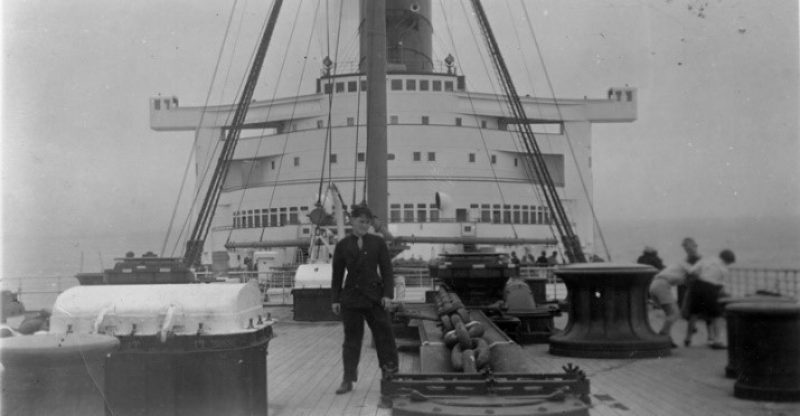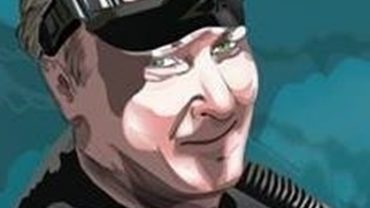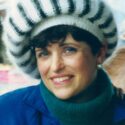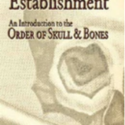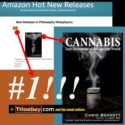Allegations regarding “Butch” Merritt, Watergate, Intelligence Agencies and “Crimson Rose,” Vol. VI
The Third Rail – Part Three
Written (and first posted) by Kris Millegan, March 21, 2011
In the statist world in which we live, there is a very real tendency to accept as fact all that the official organs of propaganda emit. Alan Milchman
My father, Lloyd S. Millegan (pictured above), was associated with American intelligence gathering operations from 1936 until he left the CIA in 1959.
On his 18th birthday, in August of 1936 he boarded a ship from Portland, Oregon to spend his sophomore year of college at the University of Shanghai. In August of 1937, he left Shanghai traveling to Vladivostok to board the Tran-Siberian Railway and journey across the USSR, and Europe, eventually attending the 1937 Oxford Life and Work Conference, along with John Foster Dulles, before going back to Oregon to finish school.
After college, my father was scheduled for graduate studies in 1939 in Switzerland, but finances and the kindling of WWII, sent him instead to Washington, DC. He was soon working in the basement of the Library of Congress under Archibald MacLeish, first as a research analyst for the Library of Congress, then with the Office of the Coordinator of Information, and finally moving on to the Office of Strategic Services (OSS) in mid-1942.

Then in August of 1943, my father became involved in what Professor Peter Dale Scott calls “deep politics.” Dad was inducted into the military, given the shortest training available, as a medic, but placed into G-2, and then joined General MacArthur’s staff as the personal secretary to Dr. Joseph Hayden, who was MacArthur’s Civil Advisor on Philippine Affairs. Part of my father’s work was to report back to OSS in Washington about MacArthur and his aide Colonel Willoughby.
Among my father’s other duties was working with the Philippine guerrillas. After Dr. Hayden died, my father worked even closer with guerillas. He went into Manila ahead of the American troops to “sequester” the Japanese-puppet government’s papers. For that act he was sued by the Japanese government and given the Legion of Merit by the US Army. He had become very friendly with the guerrillas and helped them set up a temporary government. When MacArthur returned, he found that many of the native Filipino oligarchs (who were his friends) had collaborated with the Japanese and been jailed by the guerrillas, who had actually fought the Japanese. MacArthur proceeded to let his friends out of jail, and soon someone came to replace my father, a Lieutenant Ed Lansdale. My father moved on to do research and analysis for the invasion of Japan, and then his final job in the military was to gather information and write a report on the Japanese use of opium and narcotics before and during WWII. This was a months-long project that including traveling and interviewing many political figures as well as the major opium players in East Asia.
My father then came back to Washington, DC, first to work in the State Department and then the Central Intelligence Agency, where he worked overtly until April of 1951, his last position, serving as Branch Chief, Head of East Asia Analysis Office. He then went into “private business,” setting up Pacific Books, Inc., and taking our whole family with him to Indonesia. After about a year we were back in Fairfax, Virginia, outside DC, where my father “worked” in public relations and advertising sales.
The Millegans 1951 passport picture. I’m the toddler.
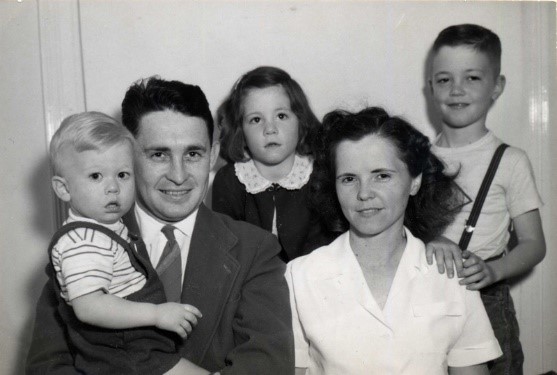
Then in 1956, my father and mother took a 4-month long trip to East Asia. Us kids were told it was to gather information for a book. He never wrote the book. Late in 1957, he was asked to serve as the vice-president of Scarritt College in Nashville, Tennessee. Then, all of a sudden, in 1959, the president of the school quit, my father was asked to serve as president, he said no, and moved the whole family out to Oregon. He went back to college (as a student), but was soon teaching in a junior high school to earn income. I was ten years old, a kid just following his folks around.
Then in the late 1960’s my father asked me what I thought of the Viet Nam War, and I gave him a flip teen-age answer, “You have some rice paddies, and a sack of hand grenades. You throw the grenades and win the war for the guys in the white hats.” My father said we had to have a talk. Sometime later, in September of 1969, he said it was time to have that talk. By then I was married, had a young daughter, was a partner in a growing record store, and sponsoring rock and roll dances. On Sept, 21, 1969, the day before my 20th birthday, we had that talk.
It was amazing, even though, I had no idea what was being said. My father seemingly had waited until a friend of his, Dr. DF Flemming (who was out promoting his new book, The Cold War and its Origins) was in town to participate. My father straight off told me, “The Viet Nam war is about drugs,” and that there were secret societies involved. I didn’t understand, and since it was the late 1960s, and I had long hair, etc. I deduced my father was having a “drug talk” with me. It all seemed so serious, what with some professor and all. So, I proceeded to sit up straight, and got ready to say, “Yes, sir,” and was waiting for my dad to tell me not to smoke dope, etc. But that is not what happened. My father continued talking about his intelligence career. He explained, how he had first been debriefed by the State Department, when he was an exchange student, then his service in the OSS, being “sheep-dipped” into G2, and being put on MacArthur’s staff. They also talked a bunch about the Viet Nam war. They both felt that “they” (the powers that be) were playing out a “lose scenario,” because of the US actions taken so far. They talked about psychological warfare, about how the news wasn’t the real news. That the stuff in the news was “sway pieces,” and that when I had been told he was an advertising/PR salesman, my dad was actually helping to put together a daily high-level briefing. That he had left the CIA in 1959, and was talking to me now because of some paper he had signed, that didn’t allow he to reveal anything for ten years.
It soon became apparent that I had no frame of reference, and wasn’t truly able to comprehend what they were saying. The meeting was over, and I went on with my life. I had some other conversations, and arguments with my Dad where I learned other things, but one of the most amazing came after he was gone. For even though I hadn’t understood the talk, it had inspired me to investigate “CIA-Drugs.”
Going through my father’s papers after his death in 1990, I found an itinerary for the 1956 trip and noticed that he had traveled to Chang Mai, Thailand. At that time I was very interested in the history of Chang Mai, because of the role the city has played in the opium/heroin trade. I had been told that the city had grown to a million people from a very small town in the 1950s, and was looking for information. Now, I could simply ask my mother.
So the next time I visited my Mother, I asked her about Chang Mai. She said that, “Yes, it was a small village. The biggest thing in town was the church.” She said she had some pictures in a book up on her bookshelf. I reached up to get the photograph album, and mom made a little aside, “That’s when I stopped believing everything I read in the newspaper.”
That pricked up my ears, because I had asked my mother questions before, and she always just brushed them aside, saying she didn’t know anything. So, I asked my mom, what did she mean? She said that in 1956 they had been in Viet Nam before going to Thailand, and while in Thailand the newspaper reported on a battle in Viet Nam, right where they had been. She said, “There was no battle, we were having a picnic.” I turned back the pages of her photo book from Chang Mai, and there were pictures of my parents, Ed Lansdale and a bunch of soldiers. They were obviously having a picnic.
I borrowed the photo book and photocopied the page. One was a picture of my mother where she was so radiant and vivacious that it was later used during her memorial. Also in that picture you can see Ed Lansdale and others sitting around having a good time – a picnic. The interesting item, is what my mother had written in the margin next to the picture: “Eudora (my mother’s name) out from Saigon with Col. Lansdale and North Vietnamese Military leaders.”
North Vietnamese Military leaders? Having a picnic?
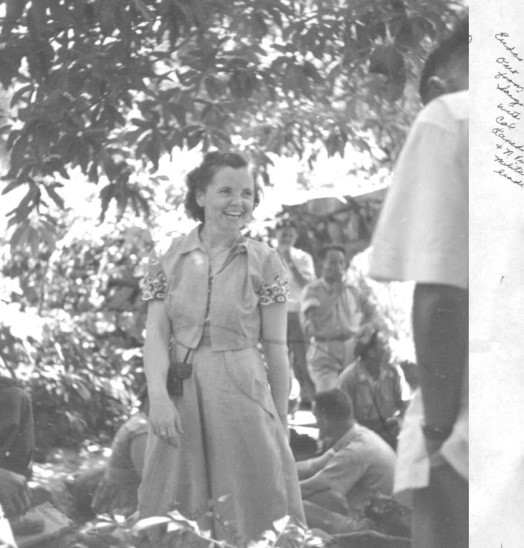
Lansdale is the guy sitting with the flattop. And it is in the historical record that he fought fake battles in the Philippines. Could it be that he did something similar in Viet Nam? (Fletcher Prouty’s JFK: The CIA, Vietnam, and the Plot to Assassinate John F. Kennedy has some amazing revelations about Lansdale’s mock and fake battles) What else was going on in Viet Nam at that time?
From Gerald Posner’s in Warlord’s of Crime:
“French intelligence and the CIA became involved in clandestine activities that would seem farfetched in a spy novel but that played a major role in making the Triads and the Golden Triangle the greatest factors in the narcotics business. French intelligence dealt in narcotics to bankroll their costly war against Ho Chi Minh. The CIA, obsessed with the perceived cold war threat of monolithic communism, assisted criminal empires on the assumption that they would provide a buffer to postwar Communist expansion. The policies of these intelligence agencies transformed the region into the leading heroin-producing and -smuggling center. The French led the way.
“When the French government finally banned opium in Indochina, French intelligence (SDECE) took the trade underground. The French military had decided the best way to fight the North Vietnamese Was to employ tens of thousands of mercenaries in counterinsurgency warfare. But the problem was a lack of funds. The Indochinese war was tremendously unpopular in France and the government provided little money. Senior French intelligence operatives decided expediency outweighed legality and “Operation X” was born. From 1951 to 1954 the French developed a sophisticated opium distribution network, a feat which won the loyalty of the hill tribes, the population from which the French hoped to recruit their counterinsurgency army. Each spring SDECE operatives bought opium at competitive prices from the hill tribes. Mountain guerrillas then avoided customs and police controls by flying the illegal drugs to a French military school. From there they were taken by truck to Saigon, where they were turned over to a syndicate of river pirates who worked for the SDECE. The river pirates transformed the raw opium into a smokable version in two large Saigon refineries. Then they distributed some to the city’s underground dens and sold the substantial excess ‘to Chinese merchants with Triad connections. The river pirates split the enormous profits with French intelligence.
“Operation X initially boosted the military efforts with large infusions of money. And the hill tribes rallied to the French cause as long as they received high prices for their opium. But when the SDECE utilized non-highland minorities as middlemen, the hill tribes complained they were being cheated. The French ignored the complaints. As the money to the hill tribes dwindled, so did their support for the French. The intelligence service’s opium policy unwittingly helped to end France’s role in Indochina. The Meo hill tribes, the backbone of the mercenary army, were so dissatisfied with their opium prices, they allowed the North Vietnamese to infiltrate the surrounding jungles and surprise the French garrison at Dien Bien Phu. Without Meo reinforcements, the French surrendered on May 8, 1954, and signed an armistice two months later.
“The entire SDECE opium experience was not lost on the CIA, which monitored the French operation and realized that opium was the key to hill tribe loyalty. In half a dozen years, when the CIA sent agents into the Laotian and Vietnamese hills to organize counterinsurgency armies, they offered the French colonel who created Operation X a senior position. Convinced the CIA would never give him real power, he refused. The SDECE, in financing its Indochina war, made the Southeast Asian narcotics trade international in scope. While some opium was smuggled out of the Golden Triangle before 1950, the sheer bulk restricted the amount exported. But when French intelligence used the air force to move unlimited quantities, they established the foundations for large-scale postwar trafficking. By selling to Chinese merchants with Triad connections, they accelerated a narcotics network that expanded and paralleled the booming Hong Kong Triads.
“Although the French signed a 1954 armistice, they merely agreed to withdraw from the northern half of the country and held a nationwide referendum in 1956. The SDECE maintained its partnership with the Saigon river pirates, ensuring immense profits from the opium dens, gambling casinos, and prostitution houses, including the Hall of Mirrors, the largest whorehouse on the globe. The CIA wanted to cancel the referendum since the Communists were likely to win a popular election. The CIA asked French intelligence to abandon its underworld ventures and turn them over to the Americans. The SDECE refused. By early 1955 the French mobilized the river pirates and some Corsican mercenaries into a wartime battalion. In April the CIA, together with the South Vietnamese Army, fought a pitched battle with the SDECE forces. It was the first and last time that two Western intelligence agencies entered open combat. [emphasis added] Colonel Lansdale, the CIA chief, directed operations from the presidential palace, while Captain Antoine Savani, the SDECE chief, moved into the river pirates’ headquarters. For six days a savage house-to-house battle raged for Saigon.
“The river pirates offered a reward to anyone who brought Colonel Lansdale to their headquarters, where they promised to cut open his stomach and stuff him with dirt. There were no takers. The river pirates had grown soft through a decade of vice and corruption, and the CIA forces pushed them back into the Run Sat swamp. The outnumbered Corsicans withdrew. At the battle’s end more than 500 were dead, 2,000 wounded, and 20,000 homeless. Ngo Dinh Diem, the Americans’ handpicked choice, was in firm control of Saigon’s political machinery and its extensive underworld.
“During the next fifteen years the United States allowed the South Vietnamese to become deeply involved in the narcotics trade. The chief of the air force, later Premier and Vice President, Nguyen Cao Ky, became a principal smuggler, disguising his trafficking as intelligence and surveillance forays. His brother-in- law ran the Saigon port and oversaw a massive import and export of drugs. South Vietnamese officials worked closely with a Triad based in Saigon’s Chinese suburb, Cholon. The Vietnamese used government planes and trucks to transport opium from the Golden Triangle into Saigon. The Cholon Triad negotiated the price with the Chinese growers in the Triangle, refined the narcotic in jungle labs and then distributed it to Vietnam’s addicts and sold the excess to large Hong Kong syndicates. During this time Bangkok became a key transshipment point, a role it retains to this day.
“U.S. military files are replete with the names of South Vietnamese government leaders who spent more time dealing in narcotics than in fighting Communists. Money poured into a system held together by corruption. But the United States not only overlooked its allies’ illegal activities, it also assisted them. The CIA followed the path of French intelligence. When operatives went into the Laotian hills to organize counterinsurgency units, CIA agents assisted the Meos in planning maximum harvests.
Posner does leave some of the story out. He lays the blame for the opium smuggling on our “allies,” and the Triads, and leaves out a major player, Corsican Lucien Conein (who we will see plays a role in later events), but the basic history lesson is correct: The US took over the Golden Triangle opium trade from the French in 1955.
The words my father used were, “The Viet Nam War is about drugs. There are these secret societies behind it.” and then, “Communism is all a sham, these same secret societies are behind it. It’s all a big game.” And that “they” were playing out a “lose scenario.” Later in a discussion/argument he told me that there was a plan to opiate the boomer generation. I didn’t understand what he was saying, but I can now comprehend, somewhat, of how he came to those opinions.
So, why would someone have a “picnic” and tell the world they were having a battle? It is a psychological operation – psy-ops. The action forces people to choose sides, and that’s one of the first steps to being manipulated. “They” want you to choose a side, any side, they don’t care. Sides can then hardened, and soon there is a “conflict.” Then, American boys and girls are sent to “Hell,” for one year. If they survive that year they get to go home. And a significant number of those boys and girls became addicted, and took their addiction home, where many became dealers to sustain the habit … and an “infection” began.
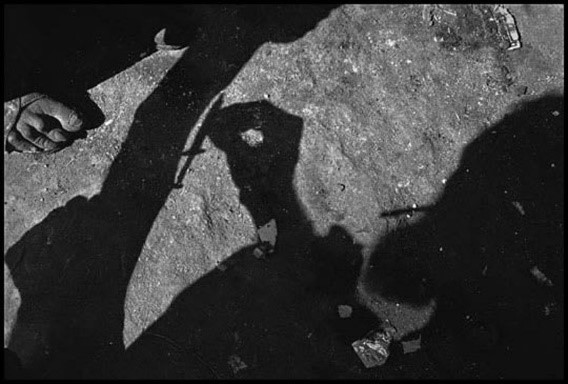
This was part of the warm-up for Watergate. But you see this wasn’t the only “protected” drug flow. There were several, creating problems for the players.
There was a flow through Texas, that Jack Ruby was involved with. There was one working through Albania, remnants of a “Nazi” network. There was an old one run by the mercantilists, with cover from the State and Justice Department. There were the operations run by Angleton. There was the one run through the old “China hands.” There were Mafia flows: All of these separate operations were causing problems, they were creating separate power centers. Drug trafficking, gathers intelligence and money, which are always a nice commodity to have in one’s corner. And with all these separate operations, hidden from each other by need-to-know and other spook and smuggler tricks, they kept on stepping on each other’s toes. Plus you had new people trying to get into the game.
Where did Nixon get his slush funds? What was all that about Mexican money laundering?
From “Watergate to Whitewater Thrillride” by Daniel Hopsicker:
“When the hush money finally gets paid to the arrested Cubans, it comes in the form of Mexican checks, turned over first to Maurice Stans of the CREEP, who transferred them in turn to Watergate burglar Gordon Liddy. Liddy then passed them on to Bernard Barker, one of the Miami station Cubans arrested on the night of the final Watergate break-in. Barker was actually carrying some of this “Mexican” cash left over from these checks when he was apprehended.
“The money for the Plumbers had come from one of George Bush’s intimates, and at the request of Bush, a member of the Nixon Cabinet from February, 1971 on. Just two days before a new law was scheduled to begin making anonymous donations illegal, $700,000 in cash, checks, and securities had been loaded into a briefcase at Pennzoil headquarters and picked up by a company vice president, who boarded a Washington- bound Pennzoil jet and delivered the funds to the Committee to Re-Elect the President at ten o’clock that night.
“A Suggestion From America’s Last Honest Man”
“The U.S. House of Representatives Banking and Currency Committee, chaired by Texas Democrat Wright Patman, soon began a vigorous investigation of the money financing the break-in, large amounts of which were found as cash in the pockets of the burglars. The largest amount had gone into the Miami bank account of Watergate burglar Bernard Barker, a CIA operative since the Bay of Pigs invasion, $100,000 that had been sent in by Texas CREEP chairman William Liedtke, longtime business partner of George Bush.
“On the day Nixon resigned the Presidency, Patman wrote to Peter Rodino, chairman of the House Judiciary Committee, asking him not to stop investigating Watergate.
“Though Patman died in 1976, his advice still holds good…but we won’t hold our breath.
“How much did George Bush himself know about the activities of the Plumbers, and when did he know it? George Bush? In 1972? Egad! But, apparently, Bush was knee-deep in things, as illustrated by the notorious White House meeting of June 23, 1972, whose exchange between Nixon and Haldeman–even without taking into consideration the unexplained 18-and-a-half minute gap in the same conversation– provided the coup de grace to the agony of the Nixon regime.
“Haldeman says (on the tapes): “Now, on the investigation, you know the Democratic break-in thing, we’re back in the problem area because the FBI is not under control, because [FBI chief] Gray doesn’t exactly know how to control it and they have –their investigation is leading into some productive areas because they’ve been able to trace the money–not through the money itself–but through the bank sources–the banker. And, and it goes in some directions we don’t want it to go.”
“To which Nixon’s famous answer is, “When you get in– when you get in (unintelligible) people, say, “Look, the problem is that this tracks back to the Bay of Pigs, the whole problem is that this will open the whole, the whole Bay of Pigs thing and the President just feels that ah, without going into the details–don’t, don’t lie to them to the extent to say there is no involvement, but just say this is a comedy of errors, without getting into it, the President believes that it is going to open the whole Bay of Pigs thing up again and, ah…they should call the FBI in and (unintelligible) don’t go any further into this case period!
“Based on Haldeman’s later testimony, that Nixon’s references to Howard Hunt and the Bay of Pigs are an oblique allusion to the Kennedy assassination, it seems that perhaps Mr. Nixon may have known more about the killing of Jack Kennedy than he was ever held accountable for–doubtlessly placing him in company with scores of others.
“There then comes the one historical moment which, more than any other, delineates the character of George Bush. The scene was the Nixon White House during the final days of the Watergate debacle. White House officials, including George Bush, had spent the morning of that Monday, August 5, 1974 absorbing the impact of Nixon’s notorious “smoking gun” tape, the recorded conversation between Nixon and his chief of staff, H.R. Haldeman, shortly after the original Watergate break-in, which could now no longer be withheld from the public. In that exchange of June 23, 1972, Nixon ordered that the CIA stop the FBI from further investigating how various sums of money found their way from Texas and Minnesota via Mexico City to the coffers of the Committee to Re-Elect th e President (CREEP) and thence into the pockets of the “Plumbers” arrested in the Democratic Party headquarters in the Watergate building.
“These revelations were widely interpreted as establishing a {prima facie} case of obstruction of justice against Nixon. That was fine with George, who sincerely wanted his patron and benefactor Nixon to resign. George’s great concern was that the smoking gun tape called attention to a money-laundering mechanism which he, together with Bill Liedtke of Pennzoil, and Robert Mosbacher, had helped to set up.
“When Nixon, in the “smoking gun” tape, talked about “the Texans” and “some Texas people,” Bush, Liedtke, and Mosbacher were to whom he was referring… The threat to George’s political ambitions was great. The White House that morning was gripped by panic. Nixon would be gone before the end of the week. In the midst of the furor, White House Congressional liaison William Timmons wanted to know if everyone who needed to be informed had been briefed about the smoking gun transcript.
“In a roomful of officials, some of whom were already sipping Scotch to steady their nerves, Timmons asked Dean Burch, “Dean, does Bush know about the transcript yet?”
“Yes,” responded Burch. “Well, what did he do?” inquired Timmons. “He broke out into assholes and shit himself to death,” replied Burch.
“Why would Bush do that? Break out into assholes and shit himself to death? Could Barry Seal’s arrest on explosives charges on July 2, 1972, have had something to do with the operations of Bush’s Republican Texas money-raising squad of Hugh Liedtke, Pennzoil, and Robert Mosbacher?
“Richard Nixon: Drug Kingpin?
“Why not? Is anyone still so naive as to believe that the notorious practice of covert operatives “looking the other way” when drug trafficking is afoot began during the Contra Cocaine 80’s? Later in our story, we will even hear some persuasive evidence that Nixon’s buddy Bebe Rebozo had been the “money man” behind top Medellin cartel drug kingpin (and Barry Seal associate) Carlos Ledher.
“According to “The Great Heroin Coup,” Nixon’s antidrug campaign was in reality a bid to establish his own intelligence network. Egil Krogh wanted the White House, instead of the CIA, handling the drug intelligence work, allowing Nixon’s staff to decide which drug traffickers to pursue. So they reorganized.
“When Howard Hunt told Krogh he could enlist for the office experienced CIA figures, starting with CIA veteran Lucien Conien at its head, it was a ballsy move, since the CIA had just been acutely embarrassed by the discovery that a huge proportion of the smugglers arrested in the big Justice Department Operation Eagle drug bust in 1970 were Cubans, and Bay of Pigs veterans to boot.
“When Nixon chose William Sullivan instead, who had once been second to J. Edgar Hoover in the FBI, “the boys down at the Masonic Lodge,” as we’ve heard them referred to, could not have been overjoyed. Clearly, the White House was out to gain control of narcotics intelligence at home and abroad. But even that wasn’t enough. Nixon’s staff also sought to control enforcement itself, and that required effective strike forces.
“So in January of 1972 the White House set up the Office For Drug Abuse Law Enforcement (ODALE), according to a plan conceived by Gordon Liddy. Nixon named the soon-to-resign-in-disgrace Myles Ambrose to head of the newly created Drug Enforcement Office, which later became the Drug Enforcement Administration.
There is much more in the article, such as one particular Mexican drug run/cash flow that was rudely interrupted until Nixon was out of office. The full article can found online. The story and more are also in Hopsicker’s book, Barry and the “Boy’s,” The CIA, the Mob and America’s Secret History.
And what was Nixon really doing in 1964 out in a Viet Nam jungle with a box of gold that was so heavy it took three people to carry?
Watergate is much more than a “third-rate burglary”: at its core, it’s all about endgame.
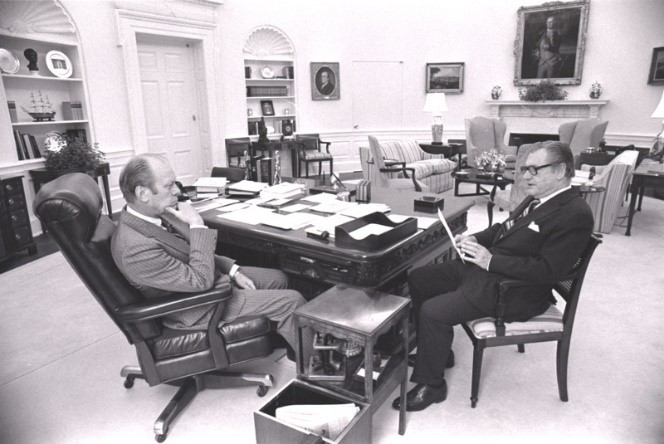
to be continued …
Watergate Exposed: How the President of the United States and the Watergate Burglars Were Set Up (as told to Douglas Caddy, original attorney for the Watergate Seven), by Robert Merritt is available at TrineDay, Amazon, Barnes & Noble, The Book Depository, and Books-a-Million.





